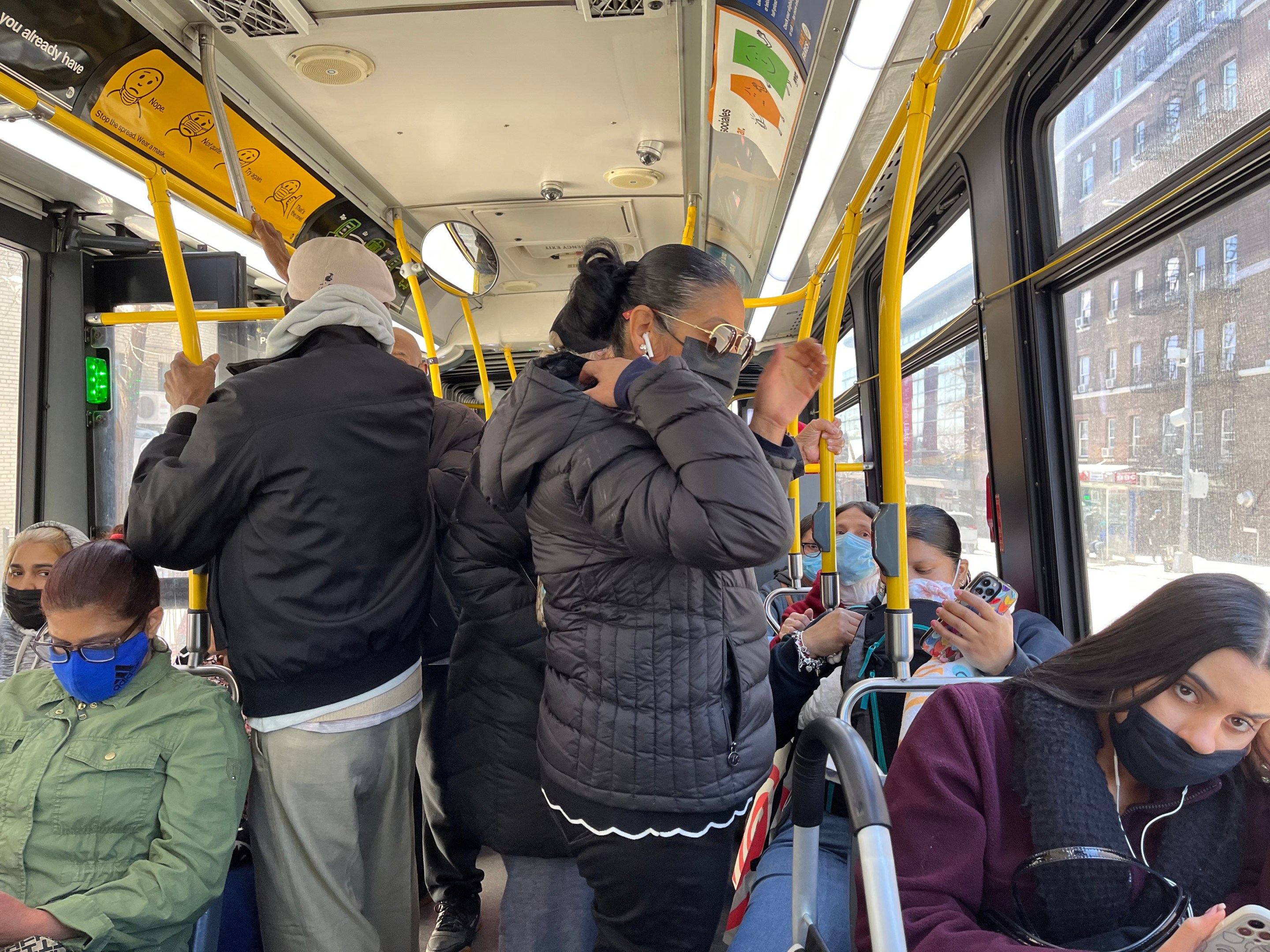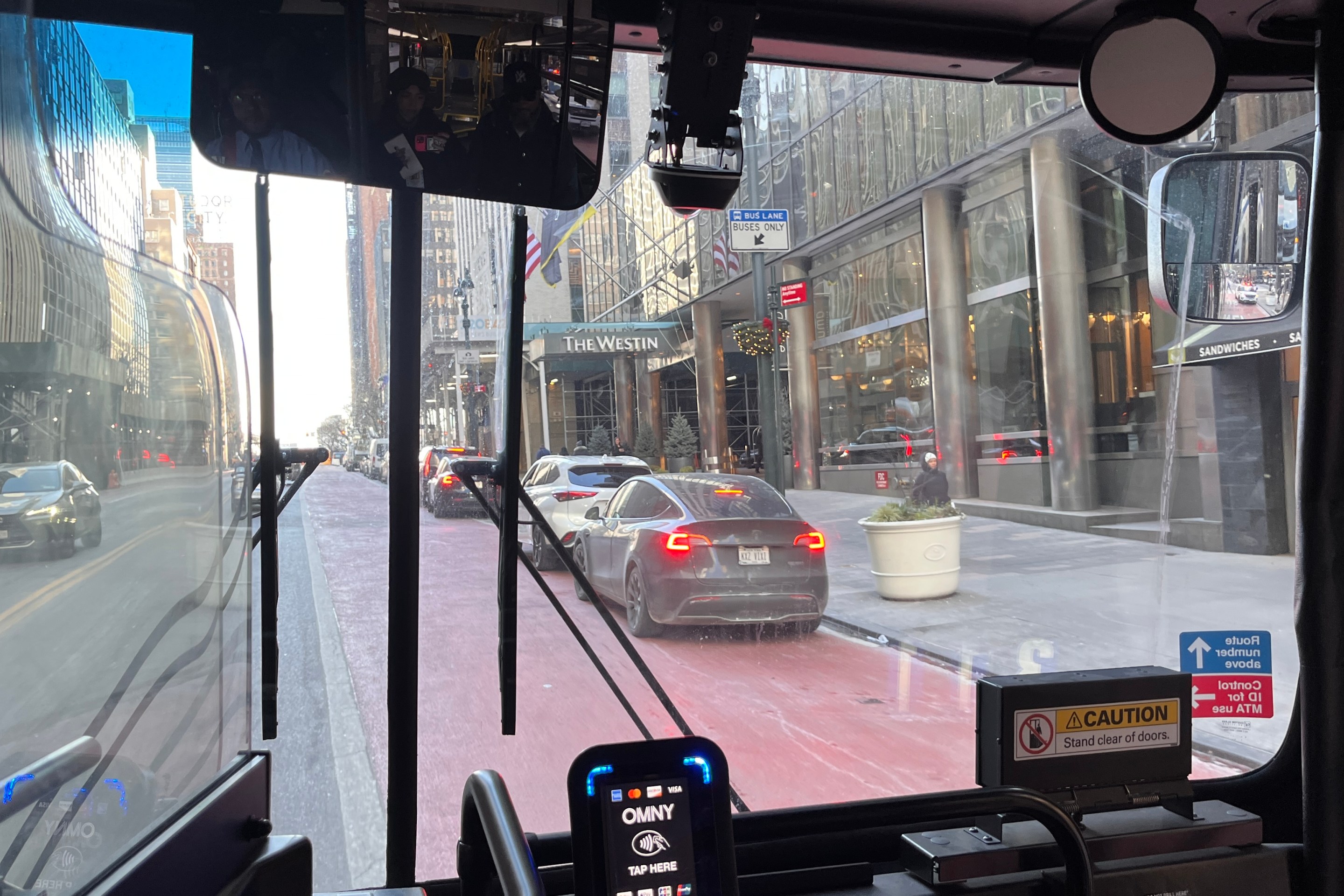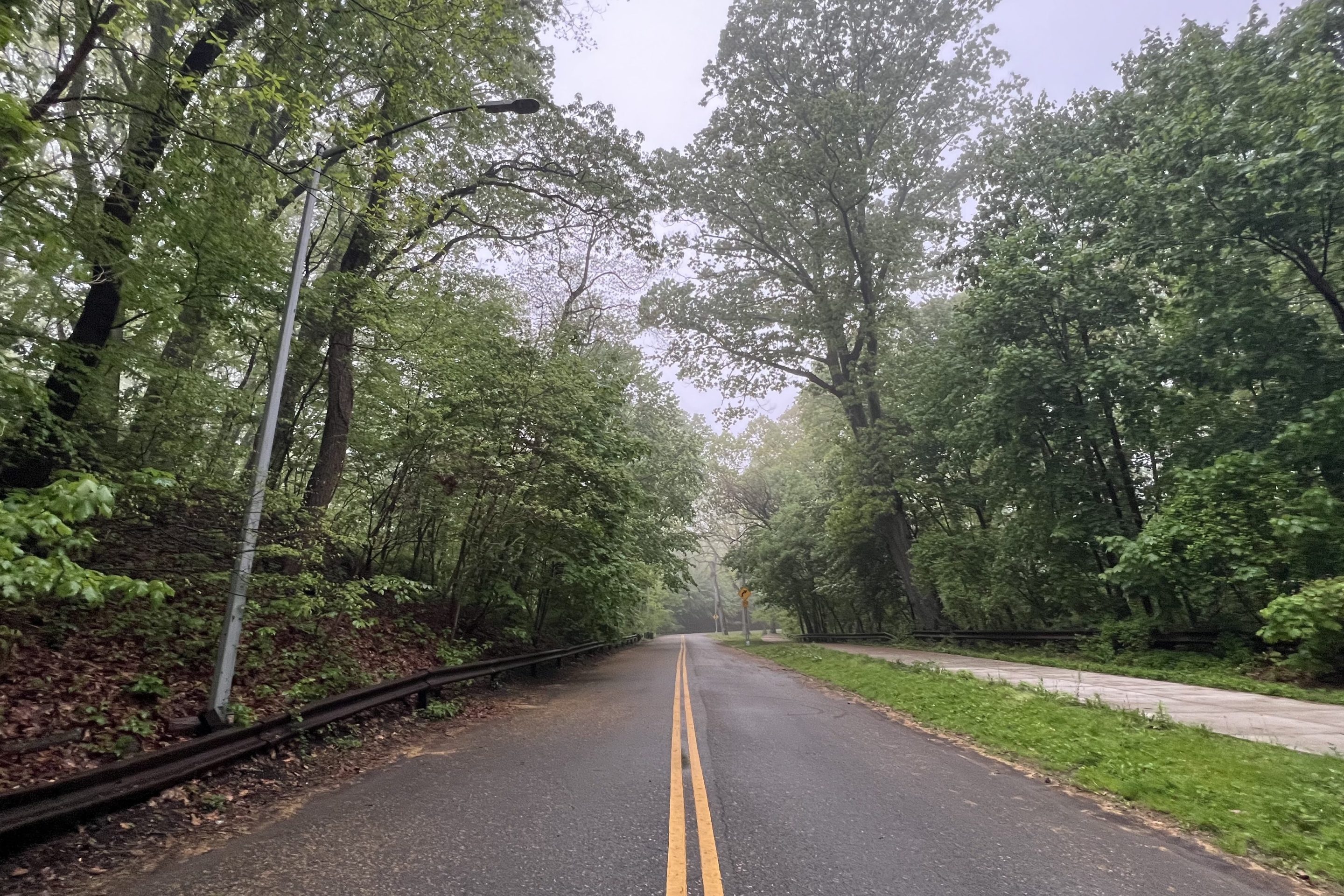The MTA's proposed Queens bus redesign is good, but needs far more additional service, and the implementation of all-door boarding, if it will realize its potential "to significantly improve the lives of riders," a coalition of transit advocacy groups, as well as Queens politicians, will tell the MTA in a letter to be sent today.
The letter from the leaders of Riders Alliance, Straphangers Campaign, TransitCenter, Transportation Alternatives, Tri-State Transportation Campaign, plus nine other groups, and Borough President Donovan Richards and five other Queens officeholders said the transit stakeholders were "encouraged" by the redesign, but are demanding five tweaks to make it better.
"We were the groups who asked for the redesign, so we are trying to be responsible by saying the bus design simply needs some improvements," said Danny Pearlstein, a spokesman for Riders Alliance. "We think the redesign is at the 50-yard line and the MTA can score if it implements our five recommendations."
The bus redesign, which the MTA unveiled in late March, has been receiving better reviews than the agency's initial "cash-neutral" changes, which picked winners and losers among different bus constituencies. The second attempt was intentionally not revenue neutral, and, as such, the agency says the majority of its local bus routes — 45 out of 85 routes — will offer service every 10 minutes or less during the weekday a.m. and p.m. peaks, a level that the MTA considers “high frequency.” Of those, 26 routes will have 10-minute or less headways all day long.
But only one route would run at least every six minutes off-peak. And eight routes will be outside the 10-minute window — and that's too much, the groups said in their letter to the MTA, because some riders will be forced to transfer simply to continue what today is a one-seat ride commute as new routes are shortened, straightened or directed to subway stations.
"Cutting wait times and speeding trips with more frequent service, along with clear and frequent communication with the public and drivers, will be essential to building support for the new routes, many of which require additional transfers," the letter said.
Specifically, the groups are calling for bus riders to get service every six minutes on half of the new routes.
Additionally, all-door boarding plays a role in decreasing wait times.
"Fewer bus stops means more riders will board at each remaining stop," the groups pointed out. "Four years ago, MTA officials promised its riders and drivers that all-door boarding would happen, but they have yet to make it a reality. For bus stop rebalancing to achieve its full efficiency potential and speed every bus trip, riders must not be backed up to enter through just one door."
The other three recommendations would not directly improve service, but they would improve conditions, equity and perception:
- Improve conditions for bus drivers: The new routes "will transform drivers’ work lives [and] drivers are concerned about sitting for longer on new and lengthened routes than with some longer routes."
- Better outreach: "The MTA should create simple and digestible information for riders in multiple languages and using multiple mediums (videos, infographics, etc.) to better explain the benefits and changes the redesign will bring to riders and to solicit feedback."
- Transparency on equity: It's crucial that the MTA measure the redesign's impact on improving the lives of long-neglected communities. "Redesigns should always include service improvements intended to reduce racial inequity and increase opportunities for people of color, women, immigrant, disability and low-income communities by expanding access to quality jobs, housing, services and recreation," the groups said, arguing that the agency does not currently have a true dashboard for assessing whether it is meeting its equity goals.
The MTA did not immediately respond to a request for comment.






